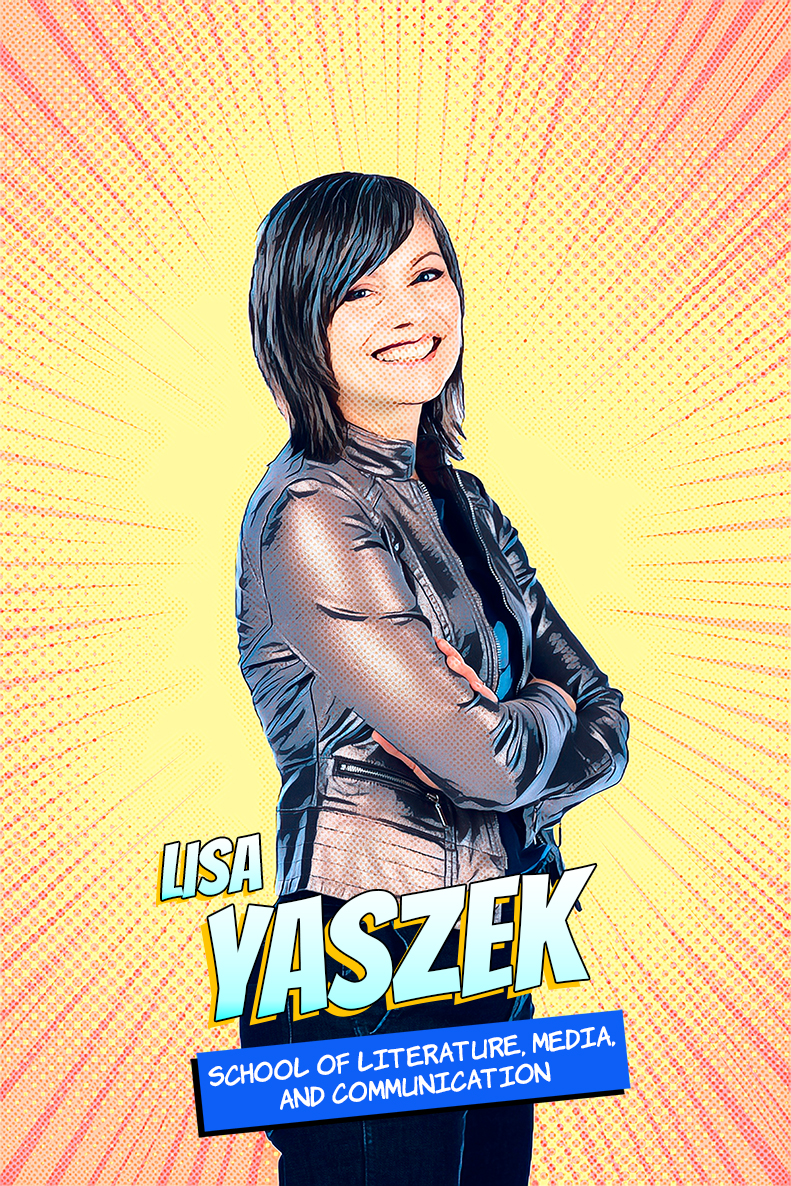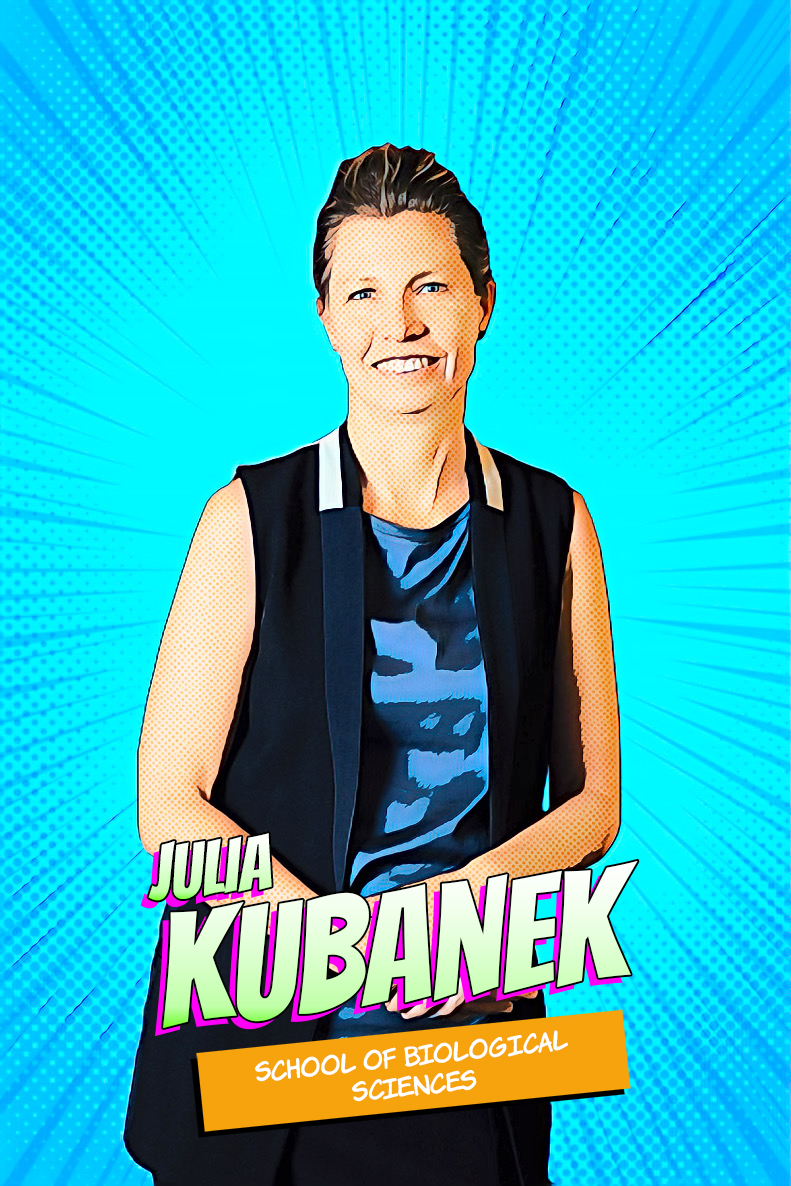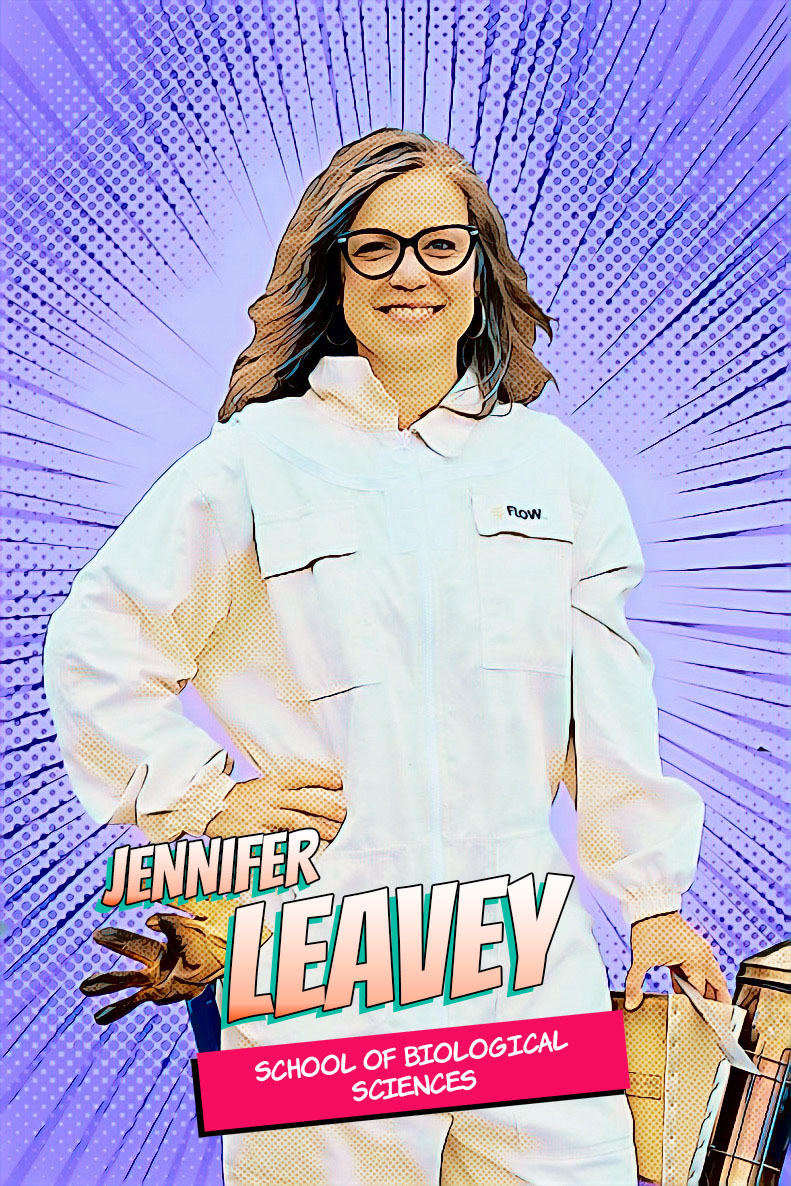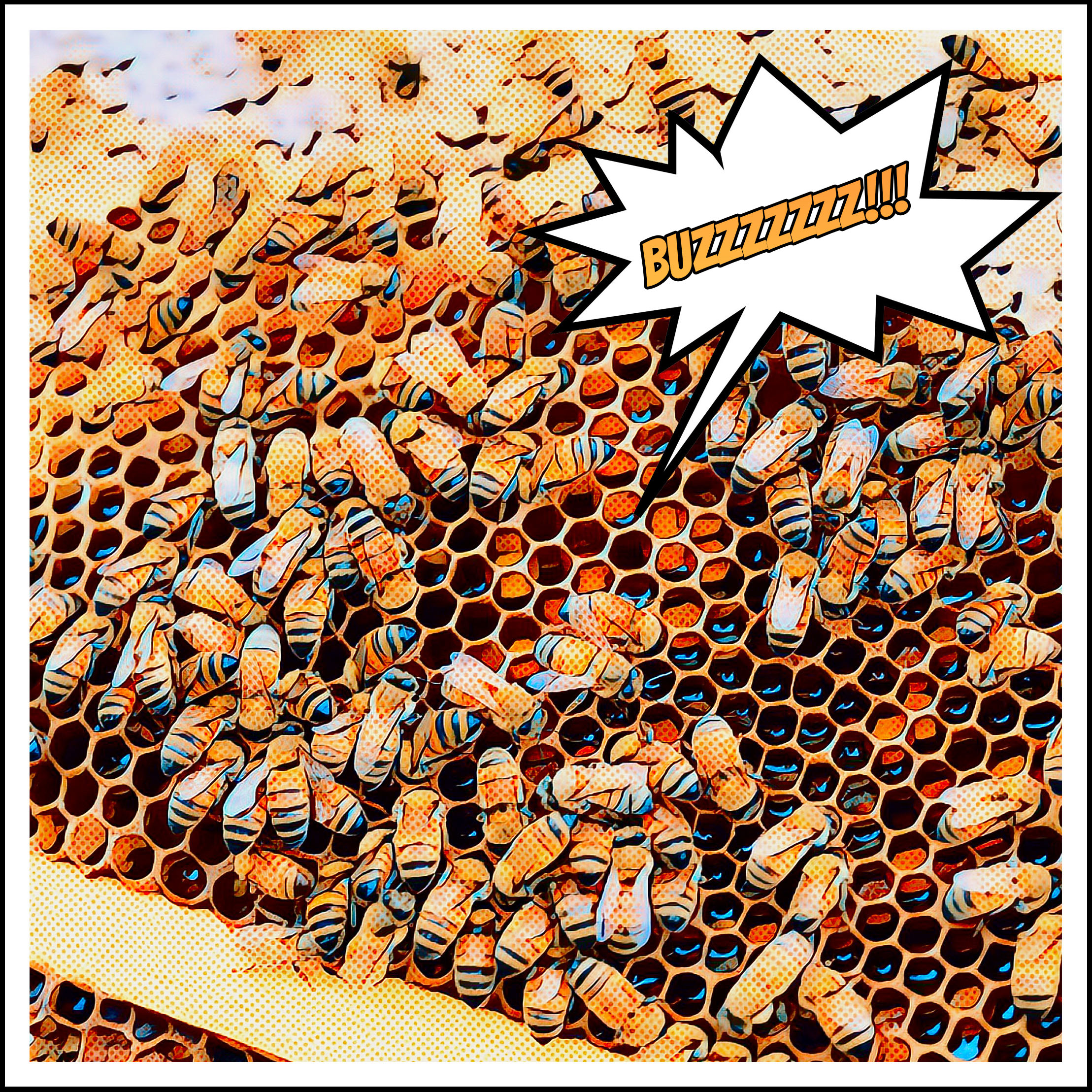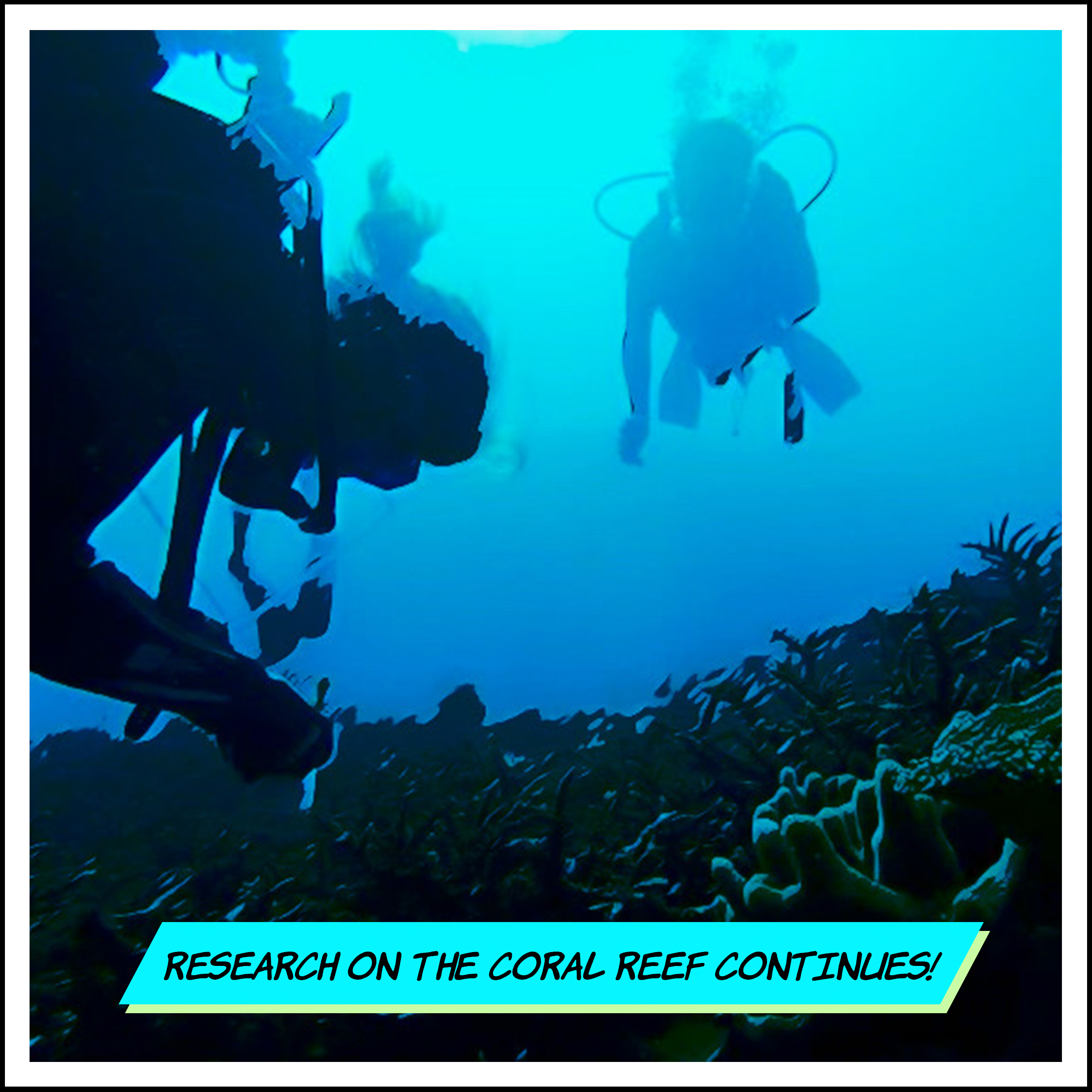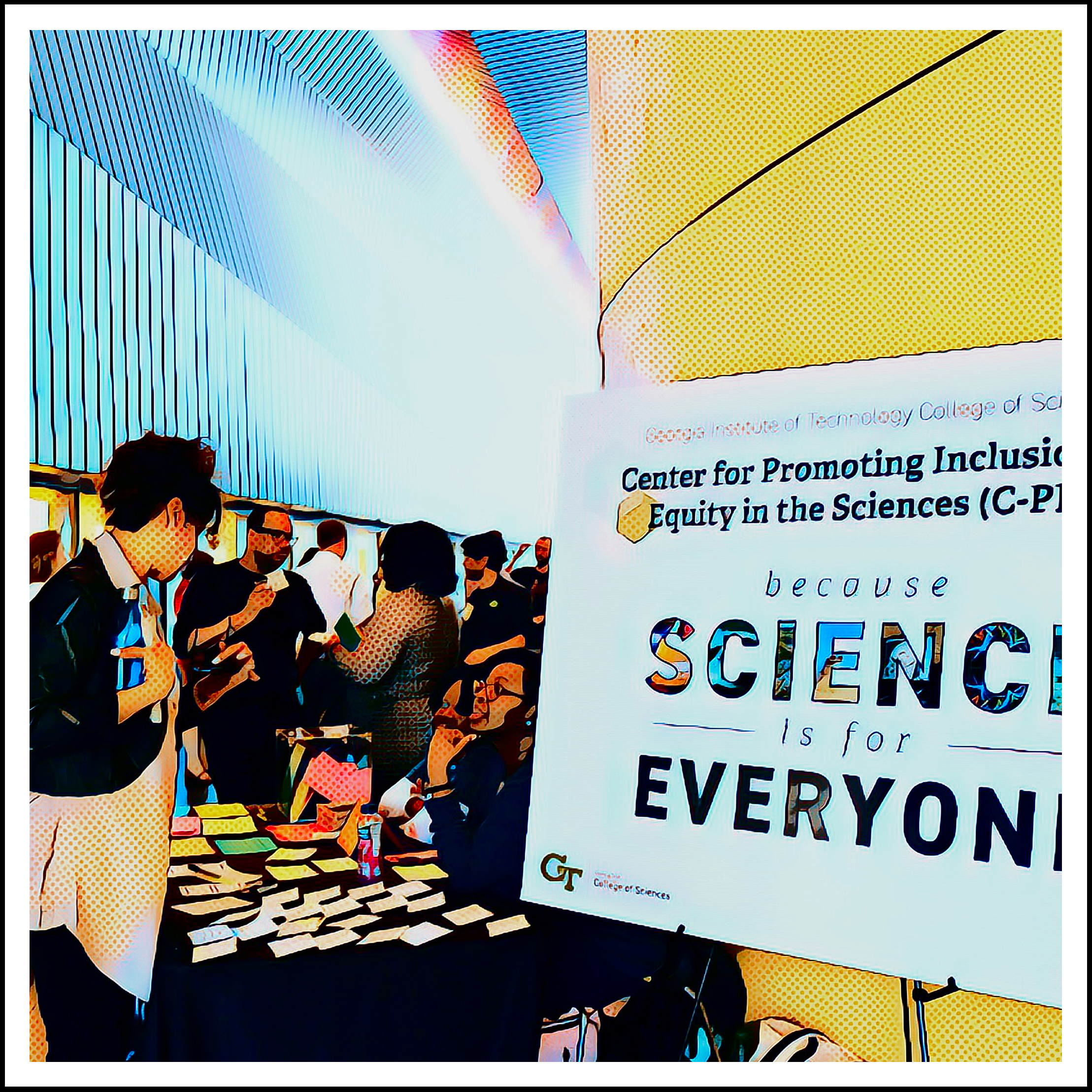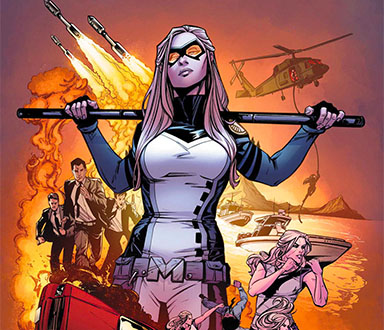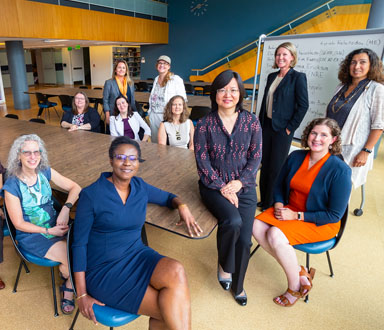

"The greatest superheroines are famous not just for their brawn, but also for their brains.
Jennifer Walters (She-Hulk) has a law degree from UCLA. Barbara Gordon (Batgirl/Oracle) holds an M.S. in library sciences from Harvard. Carol Danvers (Captain Marvel) paid her way through college with money earned in the Air Force. But of all the super schools to grace the paneled pages of American comic books, Georgia Tech is the only university that can claim not just one but two superheroines.
Given Tech's excellence in all things STEM-related, it’s no surprise that both of these superheroines are also super scientists: Wilma Calvin is a biochemical genius recruited to S.H.I.E.L.D. from Georgia Tech to recreate the serum that produced Captain America, while her famous protege, Barbara “Bobbi” Morse, completed both her Ph.D. at Tech and her spy training with S.H.I.E.L.D. at the top of her class before going on to work as a government scientist, spy, and the costumed superheroine Mockingbird.
Of course, Calvin and Mockingbird might be the world’s leading authorities on the Super-Soldier Serum, and Mockingbird’s adventures might take her across America in time and space, but all in all, these accomplishments pale in relation to those made by the real-life wonder women of Georgia Tech’s College of Sciences."
Lisa Yaszek, School of Literature, Media, and Communication

In 1971, Marvel Comics introduced Mockingbird in the Astonishing Tales comic book series. Featured for decades in Avengers comics storylines and intimated to be the true identity of Laura Barton, Clint Barton’s (aka Hawkeye) wife in the Marvel Cinematic Universe, Bobbi Morse (aka Mockingbird) is one of a few famous and fictional characters with a degree from Georgia Tech.
When Jennifer Leavey first arrived on campus as an undergraduate 20 years after the Mockingbird’s debut in print, women were strikingly underrepresented across the Georgia Tech community — including students, faculty, and researchers.
“The ‘ratio’ was something that women definitely felt,” remembers Leavey. She came to Tech 35 years after Diane Michel and Shirley Clements Mewborn, the first women to graduate from the Institute.
Leavey earned a bachelor’s degree in chemistry from Tech in 1995 and went on to earn a Ph.D. in immunology and molecular pathogenesis from Emory University. She followed that up with postdoctoral fellowships at Emory and the University of Georgia.
In 2005, she returned to the Georgia Tech College of Sciences and today serves as the College’s assistant dean for Faculty Mentoring, as a principal academic professional in the School of Biological Sciences, and as the Integrated Sciences curriculum coordinator. Leavey is also the director of the Georgia Tech Urban Honey Bee Project. Simply put, she’s a superstar on campus who has witnessed firsthand the progress women have made in the academic fields of science, technology, engineering, and mathematics.
“I love seeing women as student leaders all over campus these days,” Leavey says. “Representation matters, but still, as you go up the ranks, there are fewer and fewer faculty from minoritized groups.”
The Georgia Tech Urban Honey Bee Project is a unique interdisciplinary undergraduate research and education program focused on the impact of urban habitats on honey bees. Our hives are located on the roofs of the Clough Undergraduate Learning Commons and The Kendeda Building for Innovative Sustainable Design on the Georgia Tech campus in Midtown Atlanta.
Julia Kubanek is one faculty leader making waves at the highest academic levels. She is the Institute’s vice president of Interdisciplinary Research and a professor with joint appointments in the School of Biological Sciences and the School of Chemistry and Biochemistry. With a Ph.D. in organic chemistry from the University of British Columbia, Kubanek’s lab and research investigates the chemical biology and ecology of marine natural products.
“My students and I ask how living organisms communicate and interact with each other using chemistry as a language of life,” Kubanek says. “We explore molecules produced by microbes, plants, and animals as words in this language, delivering messages like ‘Don’t eat me; I taste terrible.’ Or ‘Yes, I’m one of your kind! Mate with me.’”
When she started at Georgia Tech in 2001 as an assistant professor, Kubanek was one of just three women faculty out of 30 in what were then known as the Schools of Biology and Chemistry. She instantly sensed the disparity.
“I felt like my gender was the first thing people noticed about me everywhere I went,” Kubanek recalls. “This felt isolating to me, even though as a biologist and a chemist I was surrounded by women students, who made up the majority of my classes and lab members.”
As those undergraduate students began to graduate and pursue careers in research and science fields, representation improved.

All organisms use chemicals to assess their environment and to communicate with others. Chemical cues for defense, mating, habitat selection, and food tracking are crucial, widespread, and structurally and functionally diverse. Yet our knowledge of chemical signaling is patchy, especially in marine environments. In our research we ask, “How do marine organisms use chemicals to solve critical problems of competition, disease, predation, and reproduction?”
“Within a few years, there were a few more women faculty, and now there are more," notes Kubanek. “Not nearly 50%, but a critical mass to support each other and advocate for more just policies and practices. Students are less surprised to meet women faculty and increasingly accepting of women as experts in the classroom and in research.”
In her role as Georgia Tech’s vice president of Interdisciplinary Research, Kubanek also stresses the need to increase representation across research, especially from historically underrepresented, marginalized, and excluded groups.
“Unless research is inclusive, in terms of who performs the research and who benefits from the research, we don’t get the best outcomes,” she says. “Having participants from diverse backgrounds on a research team allows multiple points of view to be considered in deciding what research we should tackle and how to tackle it.”
While Kubanek and Leavey, as Georgia Tech scientists, are true-life Mockingbirds, they are also active role models and mentors for women and young people in the field.
The Center for Promoting Inclusion and Equity in the Sciences (C-PIES) seeks to develop a more diverse and inclusive College of Sciences that will empower, encourage, and support our work, study, and learning in a way that allows each of us to reach our full potential.
“I’m most inspired by students who are dedicated to making the world a better place and meeting young women who aren’t hesitating to pursue their dreams,” says Kubanek.
“Yes!” agrees Leavey. “We are graduating record numbers of women in STEM fields, but we can’t settle for just that. Very few women, Julia excluded, are found at the highest levels of research. We need to ensure that there are no barriers to hiring and promoting these women. That they don’t face discrimination or bias.”
In true superhero fashion, Kubanek and Leavey also have words of wisdom for aspiring scientists, stressing the importance of embracing individual strengths and taking time to find what clicks in a career — and being open to change.
“Don’t be afraid to bring your passions and values into your work,” Leavey says. “Not everyone has to do the same thing. I love science and research, but I also love teaching and helping other scientists succeed. So, over time, my career has shifted toward focusing on those things, but you can always stay curious and be a ‘defender of science.’”
Uniqueness is a persistent theme among superheroes and scientists.
“Don’t feel like you have to be like everyone around you,” says Kubanek. “Your strength is in the unique ways that you combine how you think, how you feel, and what experiences you’ve had toward being a scientist. Being a scientist is a way of life, not just a career.”
At Georgia Tech, Kubanek and Leavey are two women who have helped pave the way for the next defenders of science, working to make the world a truly better place, and helping to develop new waves of superhero scientists who will continue to build that arc — from STEM-based learning and research to the science- and technology-based solutions of tomorrow.

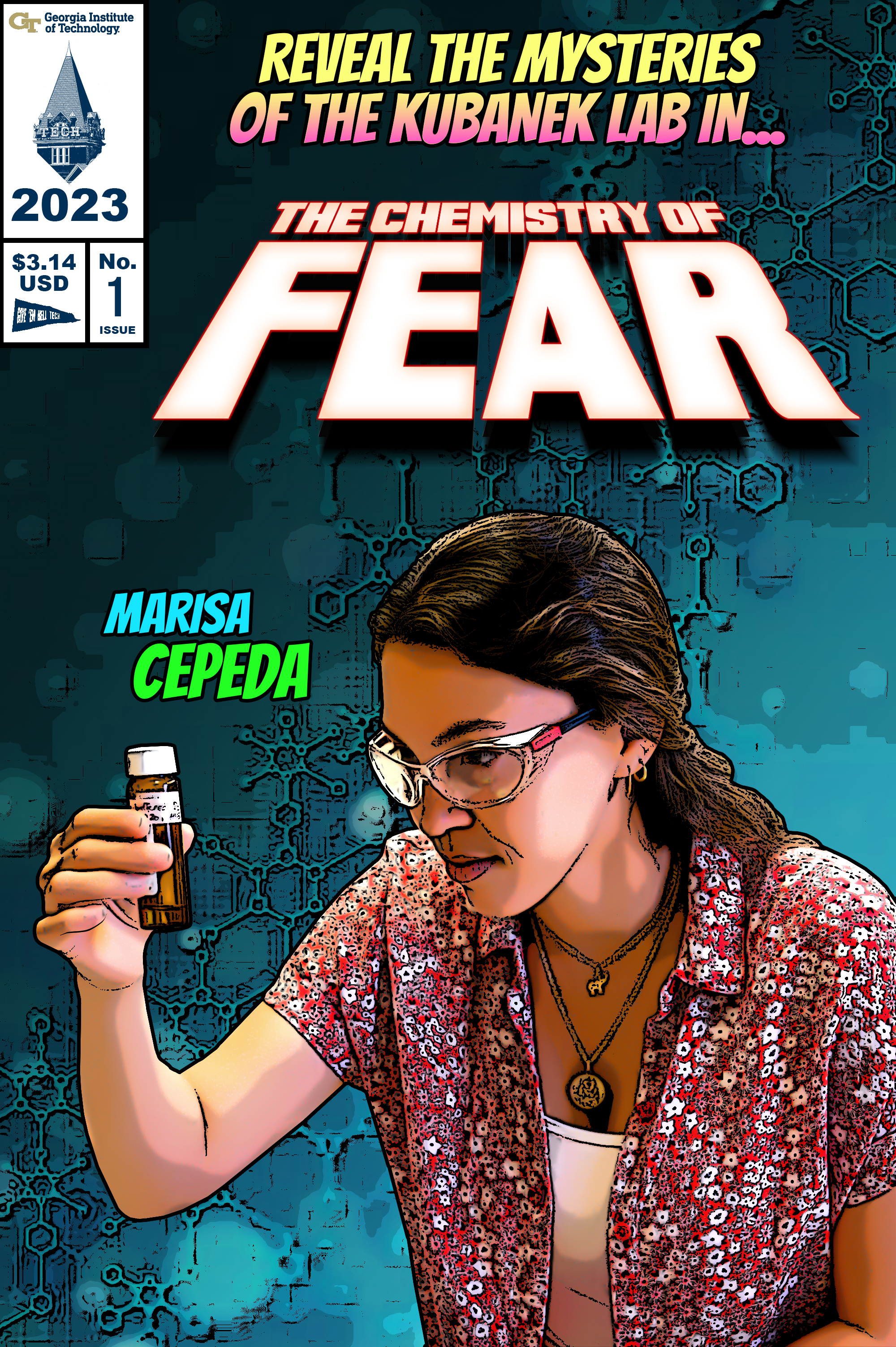
Name: Marisa Cepeda
Field: Chemistry
Level of Experience: Ph.D. Candidate
Research: Identifying chemical cues that mediate predator-prey interactions in marine systems.
Origin Story: Growing up in the Sunshine State and visiting the beaches in St. Augustine on weekends, Cepeda was always interested in chemistry, biology, and ecology, but she never imagined that she would be analyzing crab urine in a lab for an advanced degree. After getting her undergraduate degree from Florida State University, she arrived at Georgia Tech after a Google search revealed Julia Kubanek’s lab. Cepeda's research centers around the way oysters and crabs communicate through chemistry to negotiate the marine predator-prey relationship.
Why Georgia Tech? “I was initially interested in plant insect research, actually. I refined my search to professors and departments doing chemical ecology and that narrows down your search immensely, especially if you are searching in the United States.”
Desired Superpower: “I’ve always liked Storm, so manipulating the weather would be really cool, but then there are other flavors of that. I’ve seen superhero characters that can just turn into water and manipulate water. That would be cool. I’ve also seen where a superhero’s physical form can become water and enter other things that are made of water.”
Did You Know? Two or three weeks out of the year, Cepeda travels out to the estuaries and oyster reefs off the Gulf Coast to do research in the field. Most of her work is done in a lab with samples of crab urine, snail slime, and water and other biological fluids from oyster shells.
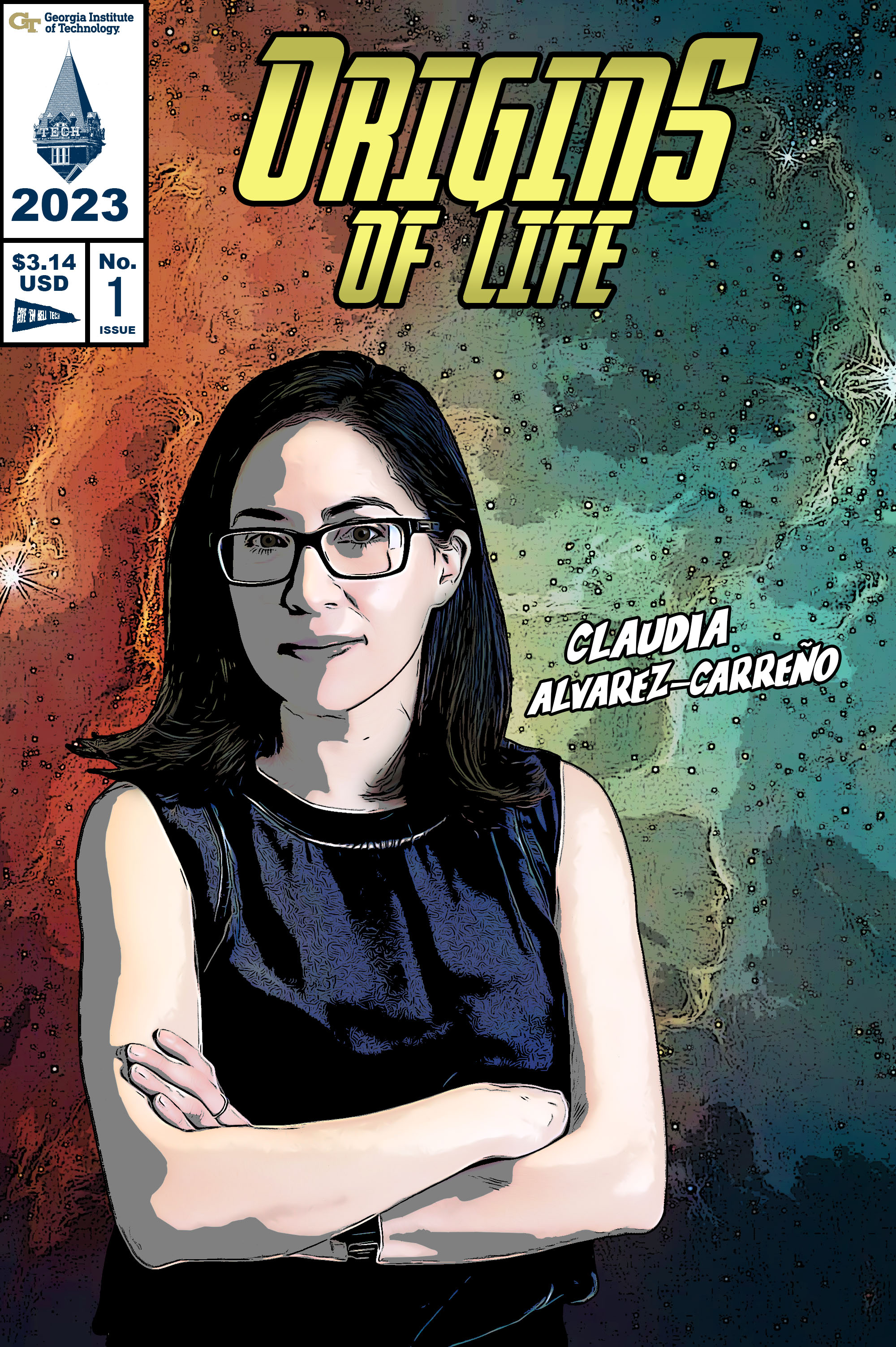
Name: Claudia Alvarez-Carreño
Field: Biochemistry
Level of Experience: Postdoctoral Fellow
Research: Bioinformatic studies to understand the origins of life: why we are here, how life happened, and where we are going.
Origin Story: Originally from Mexico City, Alvarez-Carreño initially studied medicine, but discovered a love of research — especially the prospect of uncovering information from the earliest stages of life in the universe. After joining a lab in Mexico City, she met Loren Williams, a professor in Georgia Tech's School of Chemistry and Biochemistry, and came to campus in 2019 with a Fulbright fellowship. Now, Alvarez-Carreño is on a NASA fellowship for astrobiology, convinced that understanding life in the universe means being “able to understand life as we know it.”
What has your experience been like as a woman pursuing this career? “Science is a social activity, so there are the same problems you will find in every social environment. You will find people who are very open and they don’t have a problem with a diversity of people doing research. Sometimes you find that is not always the case, but I think the exciting thing is to find allies or people who will encourage you and help you feel like you belong somewhere. That’s been amazing for me.”
Desired Superpower: “I would like to have the superpower to just touch a book and extract all the information from it. It would save time. Maybe I would learn things that I don’t want to learn, but it would be magical to just go into a library and look at one book I find that looks interesting and absorb all the information in it.”
Did You Know? Claudia has two cats, one named Fausto and the other Mary Shelley — who she never calls by that name.
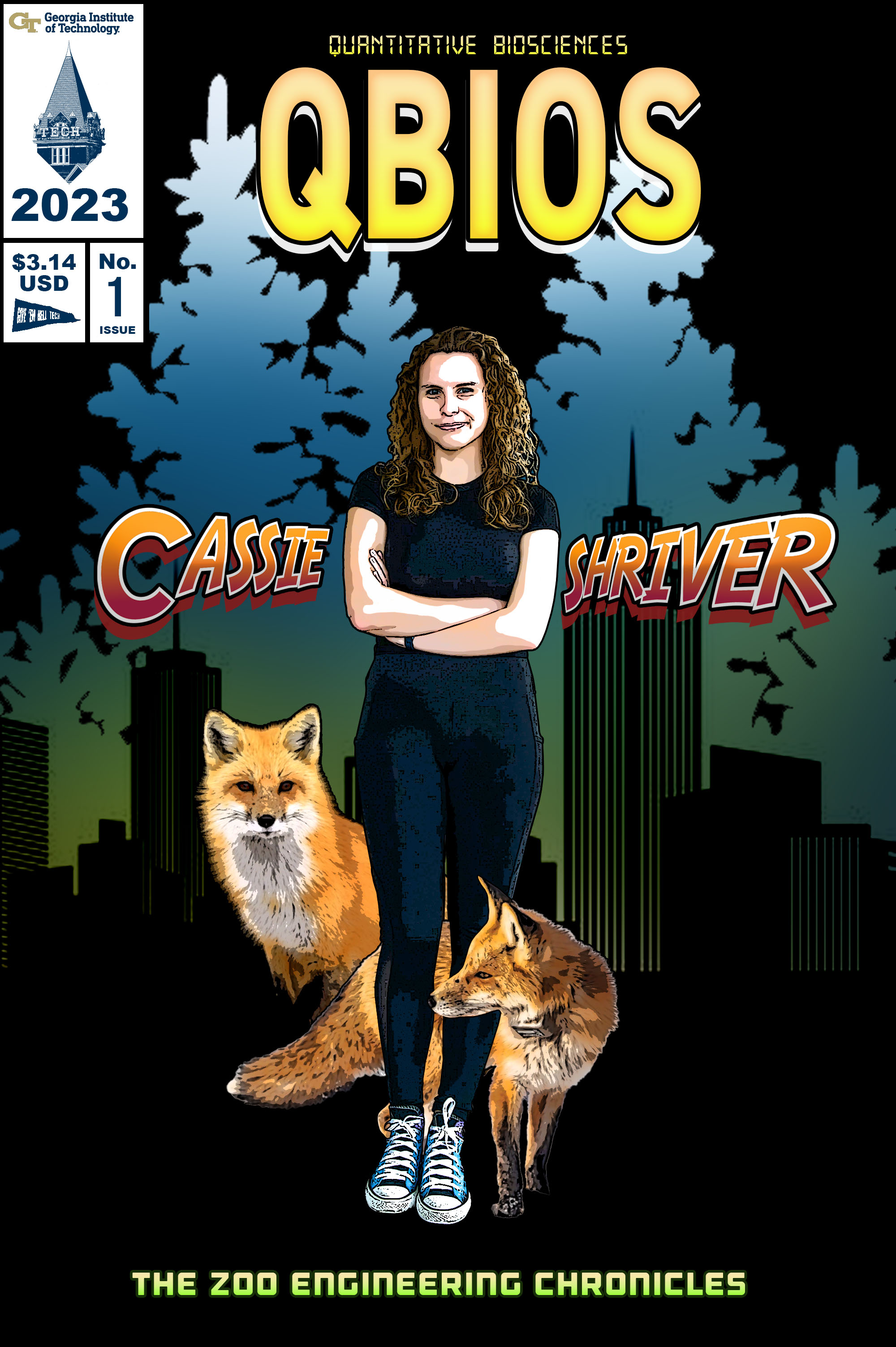
Name: Cassie Shriver
Field: Quantitative Biosciences
Level of Experience: Ph.D. Student
Research: Using biomechanics and bio-inspired design to learn from animals and inspire technology for society and conservation.
Origin Story: Growing up, Shriver and her siblings were obsessed with watching programs about animals and nature. On a high school museum trip, she saw an exhibit on biomechanics and became fascinated with understanding how animals work and the cross-section with engineering. Having majored in mechanical engineering with a minor in biology at Duke University, Shriver is melding engineering principles with a passion for biology to understand animal systems and their unique adaptations and traits for bio-inspiration.
What has your experience been like as a woman in this field? “I feel fairly fortunate that my classes have been diverse when it comes to male to female ratio, but there is still definitely — I would say a stigma. Whenever you are in group work, it is often the guys who will immediately turn to the other guys to ask questions. I think it is really important for women to make sure that their voices are heard. Sometimes, that means you have to go out there and stick up for yourself. No one else is going to ask you questions or ask what your opinion is and I would just say don’t be afraid to be loud. If you know your opinion matters, you’re here for a reason. You’ve worked hard, you have the skill set, and you should be able to use it and feel comfortable doing that.”
Desired Superpower: “I’ve always loved things associated with weather and flying, so I feel like something like that would be super cool. I’ve toyed with this idea of actually shape-shifting into animals, because I love flying so much. Why not turn into a bird to fly and then also a shark to swim underwater? Then you have the whole mix of things.”
Did You Know? Shriver is an active rock climber and relishes the mental challenge of finding a route to the summit as much as the physical activity and strength required to climb.
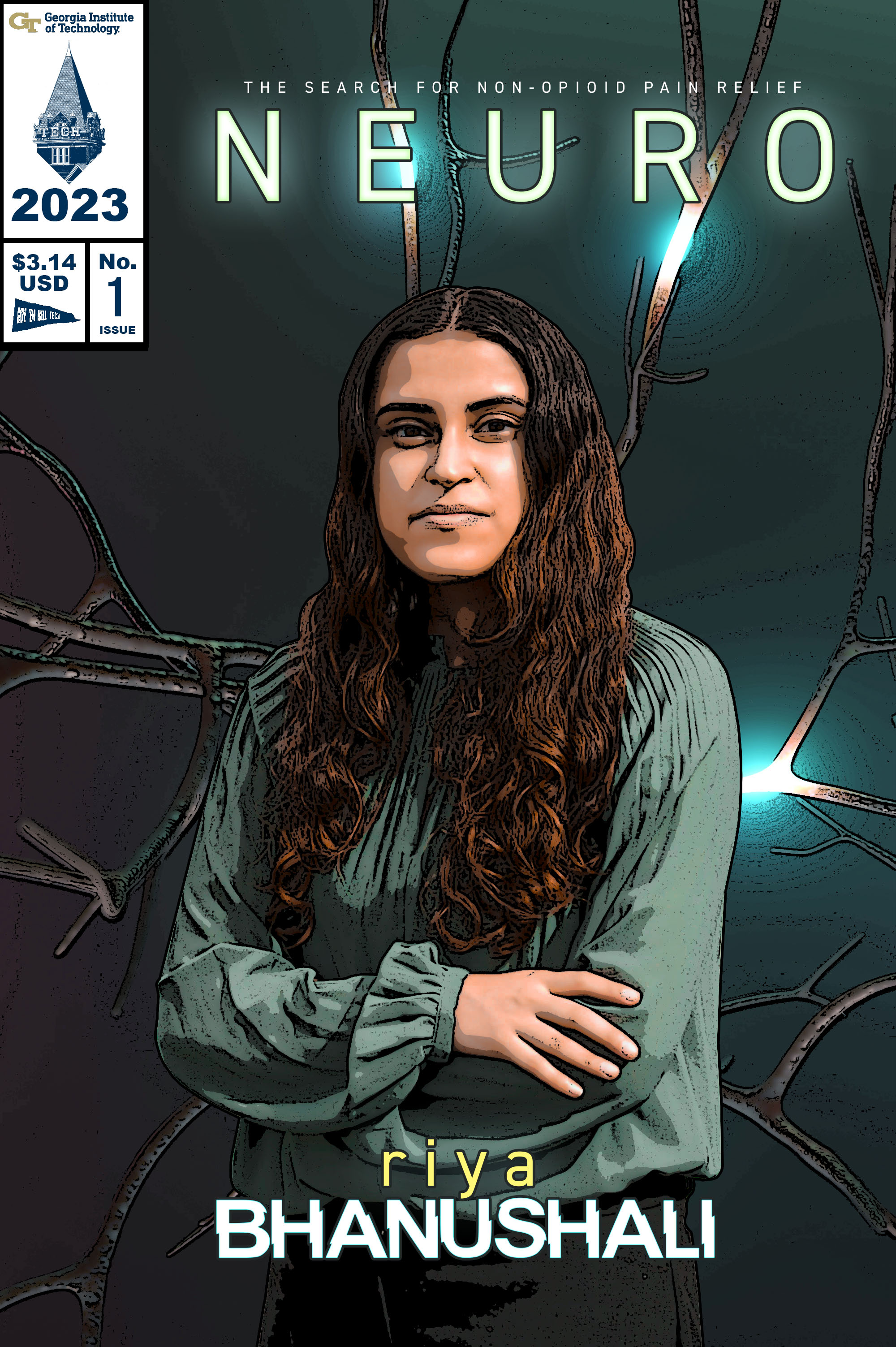
Name: Riya Bhanusali
Field: Neuroscience
Level of Experience: Undergraduate Student
Research: Exploring novel compounds in natural marine organisms that could serve as pain relievers without the toxic and addictive qualities of opioids.
Origin Story: Born in Munroe, New Jersey, Bhanusali moved to Alpharetta, Georgia, about eight years ago. With many doctors in the family, she has been interested in the medical field since she was young, and as a child she would shadow the medical professionals in her family on their rounds. “It appealed to me to make a tangible difference in someone’s life, even if you just have a conversation with a patient.” Her interest in healthcare propelled her into the sciences and her love of both psychology and biology led to the selection of neuroscience as her undergraduate major at Georgia Tech.
Why Georgia Tech? “I really like that they push students to apply whatever they are learning here. I wanted to apply the knowledge I was learning in class to outside endeavors. Georgia Tech seemed like a great place to be able to push myself.”
Desired Superpower: “I think teleportation. I think about how long it takes me to get from place to place and if I could just teleport there, it would save so much time and I could go wherever I want. I really love traveling.”
Did You Know? Bhanusali has tried every single hot sauce from the show Hot Ones. “I don’t eat meat, so I would put it on a tortilla chip just to see if I could make it all the way to the end and I was able to do it! I cried a lot. I couldn’t taste for a couple of days, but it was worth it.”
Credits
Writer Contribution: Brice Zimmerman, Jess Hunt-Ralston, Lisa Yaszek
Editors: Robert Stalker, Brigitte Espinet, Stacy Braukman
Graphic Design: Brice Zimmerman
Design Layout: Brice Zimmerman
Photography: Joya Chapman
Special Thanks to the College of Sciences and the Ivan Allen College College of Liberal Arts.
